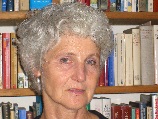
Roswitha Gropp
Hospital of the LMU, Germany
Title: The combination of disease modeling, immunological profiling and the NSG-UC animal model leads to a better understanding of the mechanism underlying inflammation in UC
Biography
Biography: Roswitha Gropp
Abstract
One reason for the lack of individualized therapies in ulcerative colitis (UC) may be that the conventional approaches are not adequate to understand the complexity of chronic inflammatory diseases. They mostly rely on the identification of certain cell types and cytokines associated with the disease phenotype, followed by verification of their roles in vitro and in vivo. This approach does not take into consideration that the observed pathologies might be the result of different causes. In addition, inflammatory responses are highly dynamic processes that require the cross talk of the immune-, epithelial-, endothelial-, muscle cells, and fibrocytes. The conventional approach further disregards the high plasticity of T-cells and monocytes, which both have the capacity to adopt their phenotype depending on the inflammatory milieu. Therefore, we took a more comprehensive approach and developed FACS, ELISA and autoantibody panels to portray individual inflammatory profiles. In addition, we developed a disease map of UC by computational modeling. Finally, we developed an animal model which enables us to proof the hypothesis generated by modeling and profiling. So far, we tested infliximab, adulizumab, sirolimus, anti CD1a antibodies, anti CCR4 antibodies and the IL-4Ra /IL-13a1 inhibitor pitrakinra in our mouse model. Results suggest that the animal model is highly reflective of the human disease, that therapeutic responses can be predicted by the computational model and that novel therapeutics emerge from this approach.

